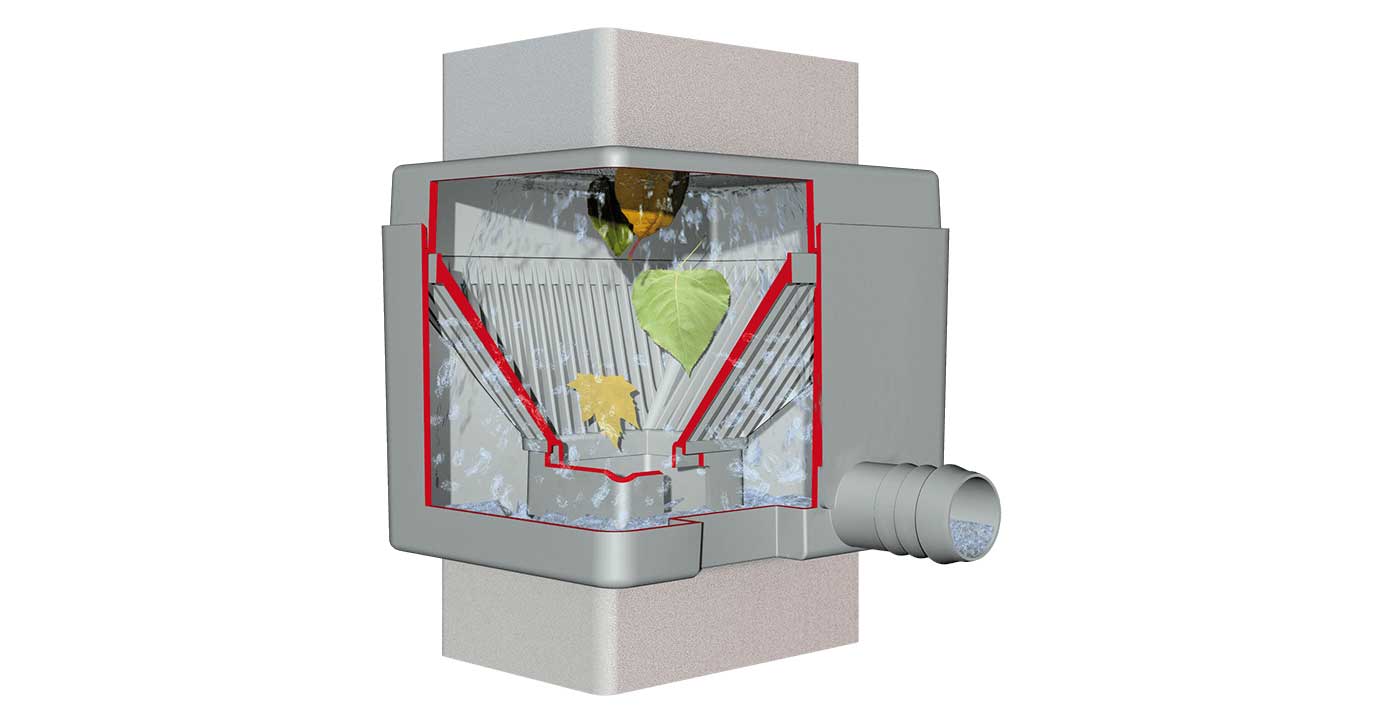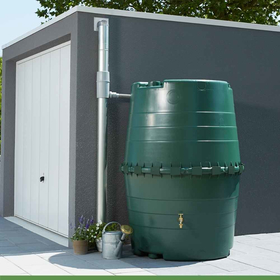Maintaining your rainwater tank

To ensure the durability of your system and the quality of the rainwater harvested, it is essential to check and maintain it regularly.
The longevity and ideal functioning of your system depends on it. Discover the steps to follow for the good use of your rainwater harvesting system.
What maintenance is required for a rainwater tank?
The frequency indications we give are to be adapted according to :
- your environment (presence of many trees),
- a very favourable year for tree development
- an older installation, which requires more regular maintenance
Making a checklist will help you not to forget anything and possibly keep track of what has been done each year.
Roof and gutter
Check the condition (and clean if necessary), once a year:
- Roofing
- Gutter
- Downspout (gutter)
It is simply a matter of removing the vegetation and debris that hinders the good circulation of your network. Branches, leaves, moss: everything must be removed.
Gutter collector
The first step in filtration is to clean the collector in your gutter. Remove the material and rinse the filter screen with water.

Filter
Remember to check the tightness of the fittings to identify and repair any rainwater loss.
A simple cleaning with a brush and a jet of grids and geotextiles is to be planned about 2 to 3 times a year.

Tank
For your rainwater harvesting tank, there is first of all a regular maintenance, which you carry out during the year. And, there is a general inspection of your installation. Indeed, micro particles have managed to get through the mesh of the different filters and can accumulate.
These sediments can be located directly with a visual check.
In addition, if the water has a bad smell or abnormal colouring, a complete draining + cleaning should be planned. For safety reasons, two solutions are possible:
- Call in a professional (ask the installer of your tank for a quote directly)
- Carry out the operation yourself, with the assistance of a second person
A cellar pump will be needed to drain. Then, to clean the inside of the tank, a brush will remove most of the deposits that have accumulated.
Regular maintenance
The inspection of your tank will be visual: connection, watertightness of the sill and the lid. It should be done at least once a year.
The check valve and siphon are checked to ensure that they are working properly, followed by the suction strainer.
General Inspection
Here are the official recommendations of the tank manufacturer GRAF:
"The tightness, cleanliness and stability of the whole installation must be checked at least every
three months.Maintenance of the entire system should be carried out approximately every five years.
All accessories must be checked and cleaned. Proceed as follows:
- Empty the tank completely
- Remove any remaining residue with a soft spatula
- Clean the walls and accessories with water
- Check that the accessories are correctly positioned".
Pump
The water supply system may need maintenance (leaking valves, taps that become difficult to open, etc).
Water points and pipes
Check that the connections are tight and that the "non-drinking water" sign is always clearly visible
If in doubt, call in a professional. This investment will allow you to extend the life of your rainwater tank installation
| Elements concerned | Frequency | To do |
| Gutters | 1-2 times a year |
Checking the condition of the tiles Cleaning of gutters + downpipes |
| Pre-filters | At least twice a year |
Pre-filter/screen cleaning. Checking the tightness of the filter grid with the filter manhole |
| Storage tank | 1-2 times a year |
Visual and olfactory control of the water. Leakage check of fittings, socket and cover Checking, operation, non-return valve and cleaning if necessary Complete inspection and emptying of the system every 5 years |
| Water make-up system | 2 times a year |
Visual inspection of electrical connections Sealing of pipe connections Pumping system that remains accessible and non-floodable |
| Water intakes | 2 times a year |
Locked filling valves Opening key not to be connected to the valve |
| Signage | 2 times a year | Presence of signage on all indoor water and rainwater pipes |
How do I clean a rainwater harvesting system without a lid?
- Disconnect the water supply
- Empty the tank completely
- Rinse with clean water at a strong flow
- Close the drain plug
The final word
Watering your garden with rainwater is a real plus. The steps presented are accessible and will facilitate proper use during the dry seasons.
To know everything about the subject, find more information and advice in this book: using rainwater. It is comprehensive and very simple. An updated version in 2013 is available
Also remember to check the health of your UV treatment system and carbon filters.


